#searchforlife
Text

What the search for alien 'megastructures' taught us about seeking life beyond Earth http://dlvr.it/T1sDgK
0 notes
Text
🌟✨ Unveiling the Secrets of the Habitable Zone 🌟✨
In the vast expanse of the cosmos, where countless stars twinkle like diamonds in the night sky, lies a concept that has fascinated astronomers, astrobiologists, and dreamers alike: the Habitable Zone. Also known as the Goldilocks Zone, it is the region around a star where conditions are just right – not too hot, not too cold – for the existence of liquid water and, potentially, life as we know it. This celestial real estate is the key to understanding our place in the universe and the possibility of other habitable worlds beyond our own.
Defining the Habitable Zone
To begin our journey of unveiling the secrets of the Habitable Zone, we must first grasp the concept itself. The Habitable Zone is the distance from a star where the temperature is neither too scorching for water to exist as a liquid nor too freezing for it to be permanently frozen. It's like the cosmic sweet spot, where life as we understand it could thrive.
The location of this zone is not fixed and depends on the star's characteristics. For instance, stars smaller and cooler than our Sun would have a closer-in Habitable Zone, while larger and hotter stars would push the zone farther away. It's a delicate balance where the warmth of a star and the size of the habitable zone determine the potential for life to emerge.
The Significance of Liquid Water
Why is liquid water so important when we talk about habitability? Water is the universal solvent, a fundamental molecule for life on Earth. It serves as a medium for chemical reactions, a solvent for essential compounds, and a habitat for countless species. Without liquid water, the chemistry of life as we know it becomes impossible.
The presence of liquid water is not the sole requirement for habitability, but it is a critical one. It's the reason we often hear about "follow the water" in astrobiology. Understanding the conditions that allow liquid water to exist guides our search for habitable worlds.
The Role of Stellar Type
Stars come in various sizes, colors, and temperatures, and their characteristics have a profound impact on the position of the Habitable Zone. Our Sun, a G-type main-sequence star, has a relatively wide Habitable Zone extending from about 0.95 to 1.37 astronomical units (AU) from the star. Earth orbits at about 1 AU, perfectly situated within this zone.
On the other hand, cooler stars like red dwarfs have smaller and more compact Habitable Zones, which can be both a blessing and a curse. These stars are far more common in the universe than Sun-like stars, increasing the potential number of habitable planets. However, red dwarfs tend to be more active, subjecting their planets to stronger stellar flares and radiation, which could be detrimental to potential life.
Conversely, massive stars like blue giants have much wider Habitable Zones but are less common and have shorter lifespans. Planets within their Habitable Zones would need to be positioned at a considerable distance to avoid being engulfed by their expanding stars.
The Habitable Zone's Dynamism
One intriguing aspect of the Habitable Zone is its dynamism over time. It's not a static region but evolves as the star ages and its characteristics change. For instance, as a star like our Sun ages, it becomes hotter and more luminous. This means that the Habitable Zone shifts outward over time.
This dynamism raises questions about the long-term habitability of planets. A world that might have once been in the Habitable Zone could find itself too close to its aging star, turning into a lifeless desert or even being consumed by the star's expansion.
Understanding these shifts is crucial when searching for habitable exoplanets. We must consider not only a planet's current position within the Habitable Zone but also the future changes it will undergo.
Exoplanets: The Treasure Trove of Discovery
The quest for habitable worlds has been greatly accelerated by the discovery of exoplanets – planets that orbit stars beyond our solar system. Over the past few decades, astronomers have detected thousands of these distant worlds, some of which reside in their star's Habitable Zone.
Tools like the Kepler Space Telescope and the Transiting Exoplanet Survey Satellite (TESS) have been instrumental in this effort. They employ the transit method, observing slight dips in a star's brightness when a planet passes in front of it, to identify and characterize exoplanets. Through these missions, we have found a tantalizing array of diverse exoplanets, from scorching gas giants to rocky, Earth-like worlds.
One notable discovery in recent years is Proxima Centauri b, an exoplanet orbiting our closest stellar neighbor, Proxima Centauri. This planet lies within its star's Habitable Zone and has ignited hopes of finding life beyond Earth. However, the challenges of studying exoplanets in detail, such as their atmospheres and surface conditions, remain formidable.
The Search for Life Beyond Earth
The Habitable Zone not only guides our search for exoplanets but also raises the question of whether life exists elsewhere in the universe. The discovery of extremophiles on Earth – organisms that thrive in extreme conditions, such as deep-sea hydrothermal vents or acidic hot springs – suggests that life can be remarkably resilient.
This resilience leads scientists to consider that life might exist in unconventional environments, both within our solar system (like the subsurface oceans of Europa or Enceladus) and on exoplanets beyond. The Habitable Zone provides a starting point for these investigations, as it defines the regions where life, as we understand it, is most likely to emerge.
The Limits of Our Knowledge
As we unveil the secrets of the Habitable Zone, it's essential to acknowledge the limits of our knowledge. While we have made tremendous progress in identifying exoplanets and characterizing their environments, we are still in the early stages of understanding the diversity of planetary systems and the potential for habitability beyond Earth.
The search for life beyond our planet remains one of the greatest mysteries of our time, and the Habitable Zone serves as our guide. It reminds us that the universe is vast, with countless opportunities for exploration and discovery. As we continue to peer into the cosmos and study distant worlds, we may one day unlock the ultimate secret – whether we are truly alone or whether other habitable zones in the universe teem with life, waiting to be unveiled. 🌟✨
#HabitableZone#GoldilocksZone#Exoplanets#Astrobiology#LifeBeyondEarth#StellarHabitability#CosmicExploration#LiquidWater#SearchForLife#SpaceScience
0 notes
Photo

O Son of Man!
I loved thy creation, hence I created thee. Wherefore, do thou love Me, that I may name thy name and fill thy soul with the spirit of life.
4 notes
·
View notes
Photo
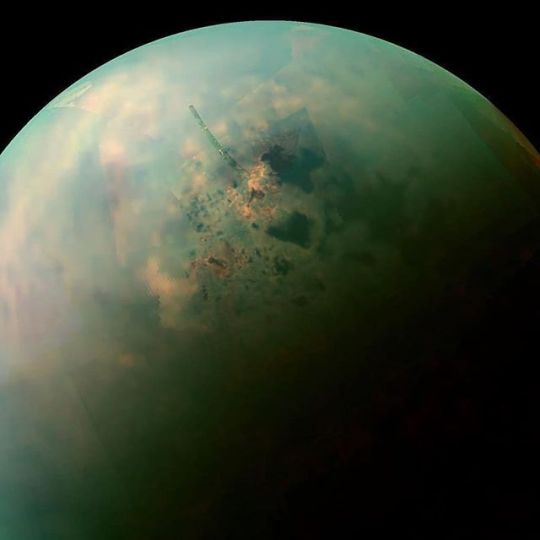
For @nasa newest moon science mission in 2026, aiming to land a flying a Quadcopter named Dragonfly the size of a car on the surface of Saturn's moon Titan in 2034, in the search for alien life in multiple locations hundreds of miles apart. . .
posted on Instagram - https://ift.tt/2FFfJjC
213 notes
·
View notes
Text
Space Telescope Gets to Work
Our latest space telescope, Transiting Exoplanet Survey Satellite (TESS), launched in April. This week, planet hunters worldwide received all the data from the first two months of its planet search. This view, from four cameras on TESS, shows just one region of Earth’s southern sky.
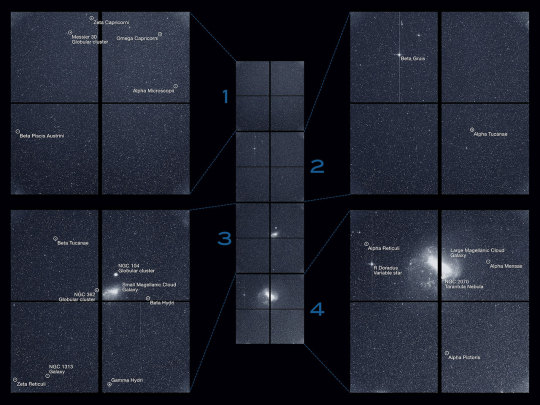
The Transiting Exoplanet Survey Satellite (TESS) captured this strip of stars and galaxies in the southern sky during one 30-minute period in August. Created by combining the view from all four of its cameras, TESS images will be used to discover new exoplanets. Notable features in this swath include the Large and Small Magellanic Clouds and a globular cluster called NGC 104. The brightest stars, Beta Gruis and R Doradus, saturated an entire column of camera detector pixels on the satellite’s second and fourth cameras.
Credit: NASA/MIT/TESS
The data in the images from TESS will soon lead to discoveries of planets beyond our solar system – exoplanets. (We’re at 3,848 so far!)
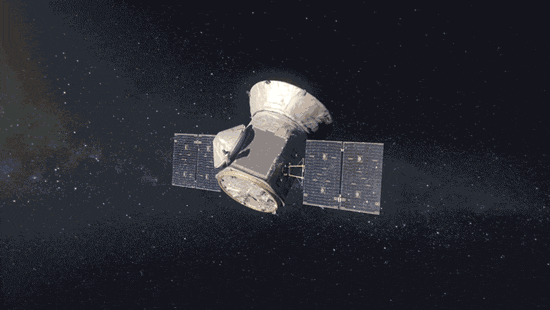
But first, all that data (about 27 gigabytes a day) needs to be processed. And where do space telescopes like TESS get their data cleaned up? At the Star Wash, of course!
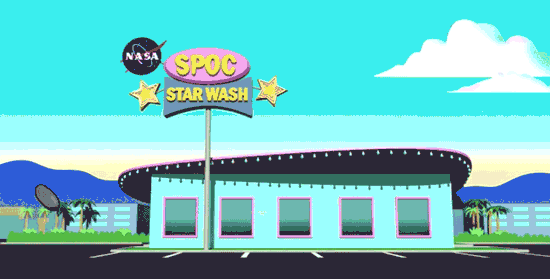
TESS sends about 10 billion pixels of data to Earth at a time. A supercomputer at NASA Ames in Silicon Valley processes the raw data, turning those pixels into measures of a star’s brightness.

And that brightness? THAT’S HOW WE FIND PLANETS! A dip in a star’s brightness can reveal an orbiting exoplanet in transit.
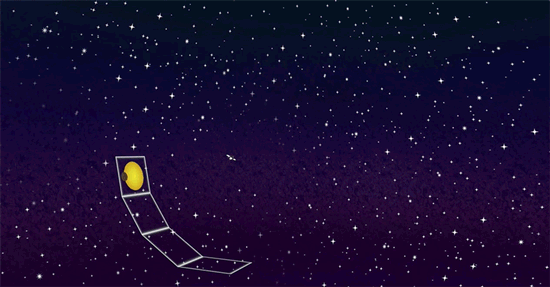
TESS will spend a year studying our southern sky, then will turn and survey our northern sky for another year. Eventually, the space telescope will observe 85 percent of Earth’s sky, including 200,000 of the brightest and closest stars to Earth.
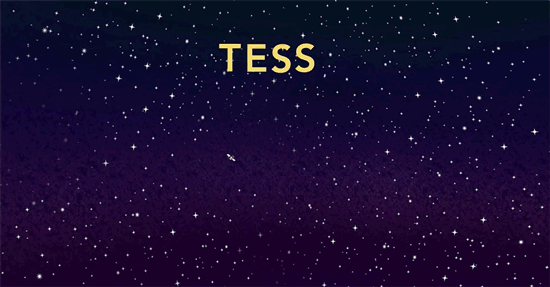
Make sure to follow us on Tumblr for your regular dose of space: http://nasa.tumblr.com
#nasa#space#tess#planet#universe#planethunter#solarsystem#science#search#searchforlife#telescope#planets#stars
2K notes
·
View notes
Photo

#Repost @cosmosdrone with @get_repost ・・・ Another image of the Helix Nebula 🔭🌌 . . This Is a large planetary nebula located in the constellation Aquarius about 700 light-years from our Solar System. It was discovered in 1824 by German 🇩🇪 astronomer Karl Ludwig Harding. . . 📸 Credits NASA #starstuff #outerspace #galactic #spacepics #spaceart #planet #astronomyphotography #nightsky #spacetime #hubble #astronaut #spaceship #spacetravel #blackhole #searchforlife #moonphotography #science #astrophysics #blueplanet #astronomy #milkyway #space #universe #cosmos #spacetravel #explore #milkywaygalaxy #astrobiology #earth #hubbletelescope https://www.instagram.com/p/BzHnOFqn5X6/?igshid=1fpmd1vgaks15
#repost#starstuff#outerspace#galactic#spacepics#spaceart#planet#astronomyphotography#nightsky#spacetime#hubble#astronaut#spaceship#spacetravel#blackhole#searchforlife#moonphotography#science#astrophysics#blueplanet#astronomy#milkyway#space#universe#cosmos#explore#milkywaygalaxy#astrobiology#earth#hubbletelescope
52 notes
·
View notes
Photo

Super Blood Wolf Moon over the Ravenel Bridge spanning between Mount Pleasant and Charleston, SC. I really wanted to have something to frame the eclipse up with, but with it being directly overhead, choices were limited and I didn't want to do a composite this time. I've seen lots of cool ones with the moon a hundred times bigger than it appeared in the sky and framed up on the horizon, and I may still do one later on, but I wanted to share it the way it appeared in the sky first. I'm happy that I was able to capture as many stars as I did, especially the Pleiades just down and to the right of the Moon. Thanks @nikali_h and @scuba_ducky_ for inviting me out. 🌖✨🌎 . . . 📸 [Camera] Olympus OM-D EM-10 Mark II 🔎 [Lens] Lumix 20mm f1.8 👁🗨 [Aperture] ƒ/2.8 🐇 [Shutter] 1/4s 🔺 [ISO] 3200 . . . #getolympus #constellations #starstuff #outerspace #spacepics #superbloodwolfmoon #astronomyphotography #deepsky #bloodwolfmoon #bloodmoon #moon #astroglore #searchforlife #wolfmoon #space #science #astrophysics #stars #astronomy #universe #cosmos #spacetravel #explore #totallunareclipse #superbloodmoon #discovery #hope #faith #love #soberaf (at Ravenel Bridge) https://www.instagram.com/p/Bs6IKudhhbg/?utm_source=ig_tumblr_share&igshid=18hhkqwev1jtw
#getolympus#constellations#starstuff#outerspace#spacepics#superbloodwolfmoon#astronomyphotography#deepsky#bloodwolfmoon#bloodmoon#moon#astroglore#searchforlife#wolfmoon#space#science#astrophysics#stars#astronomy#universe#cosmos#spacetravel#explore#totallunareclipse#superbloodmoon#discovery#hope#faith#love#soberaf
1 note
·
View note
Text
M’L P’s

Search for Life...
Born free in the field of life; unknowing of the world; in time be conditioned by the world and those you know.
Grow and try to be your own person; yet you’re suppressed by expectations and conditions.
Break free and search for your own life. Return to a time when you were free.
Conform to the rules and regulations of the world, both physical and spiritual.
In your heart search for a life that is free. Look for peace, love, joy, and happiness.
Go where you have to go, and do what you have to do. Keep in touch with who you are.
So, even if you feel trapped you know you will continue to search for your life.
REDIRECTION Correction...
The Start of a trial; you ask why and what did I do wrong? You begin a search for the cause and answers to these questions. In time the path is made clear to all it may concern.
The Middle of a trial; you have realized your errors! You seek out solutions to repair the situation. In time those at fault are held accountable.
The End of a trial; you want to know is the trial really over? Such answers are known to those who ask the correct questions. In time will things get back on track?
Can the process of redirection and correction really happen? Egos and emotions must move aside and recover from pain.
Sit and be quiet; look for the Lord to guide you. In time the reasons behind the trial may become known
Let me know what you think and pass the thought along.
12 notes
·
View notes
Text
This May Only Make Sense to Me
Now that I’m here, knowing what I am,
feeling my worth in the progress, taking in what I can
How dare I turn around, start to digress,
Feeding the hole I just put in my chest
I had it under control, at least that’s what we always say
Maybe another day
Bills stacking up, the ones you refused to pay-
Pay attention to
Temptations the one making rules
And we let it. Fools.
Now that I’m here, knowing what I’m not
Feeling a lesser sense of guilt, this subject is no longer the main plot
A few steps back, but wisdom soon comes and my mind can relax
I have it under control, it didn’t unravel this way before
It’s not a story untold, it’s not old pages too delicate to unfold
I don’t feel stiff, and my spirit didn’t grow cold
Focus on it
That He was here first and He didn’t submit
Neither can we Recommit.
#thoughts#selfawareness#ramblings#biography#poem#positivity#wisdom#poets on tumblr#innerstrength#searchforlife#trinity
2 notes
·
View notes
Text
@searchforlife cont. from here.
“Doesn’t mean he predicted that this was going to happen” Pandora stuttered near the end of her remark as she stood crossed arm over the remains of one of the more rebellious crew members. His body was deformed and his skin had become patchy with ashy marks. “I’m no doctor but im pretty sure he is dead.” she said with a shake of her head “the cause of death was something internal as there are no physical wounds.” she commented as she sighs” we need to contact the medical wing see if they can diagnose the cause of death.”
A sigh slipped through his lips. “I’m perfectly aware he’s dead. The likelihood of someone’s survival once their body has reached this level of damage is unlikely.”
He paused a moment, gazing over the corpse. It was quite fascinating to see the extent of the effects, but it was best he did not ponder this out loud with an audience.
“If he were by some chance still alive, I’d have to kill him anyway. Not that it matters now; had he listened to my advice he wouldn’t be lying before us.”
8 notes
·
View notes
Video
★★★★★ Culture Trip
★★★★ Den of Geek
★★★★ The Independent
★★★★ The Hollywood News
#LifeMovie Only At Cinemas NOW
#LifeMovie#Life#SearchforLife#Ryan Reynolds#Rebecca Ferguson#Jake Gyllenhaal#Hiroyuki Sanada#Ariyon Bakare#Scifi#Horror#Thriller
5 notes
·
View notes
Video
Hi, young souls . . An amazing discovery on planet VENUS!! ♥️💯 a group of scientists have discovered signs of LIFE . . Totally out of this world news!! 🌍😁😁 . . Cheers 😎 . ninermike9M Malaysia #9Mblues . . #rocketscience #rocketlaunch #venus #syokgiler #malaysia #aerospaceengineering #aerospace . . Repost from Royal Astronomical Society @royalastrosoc Thanks guys for the video 👍😘 . . It's 4 pm! Time to explain what we've been so excited about - here's your 60 second overview of #VenusNews. Don't forget you can watch our press conference featuring the lead author of the study, Professor Jane Greaves of @cardiffuni, getting started on our YouTube channel . youtube.com/royalastrosoc . #breakingnews #astronomy #Venus #research #science #Phosphine #searchforlife (at Planet Venus) https://www.instagram.com/p/CFKOiweJGD5/?igshid=1k8njo7p858ue
#9mblues#rocketscience#rocketlaunch#venus#syokgiler#malaysia#aerospaceengineering#aerospace#venusnews#breakingnews#astronomy#research#science#phosphine#searchforlife
0 notes
Photo

Water Vapor Detected Leaving Mars Atmosphere A team of researchers have discovered water vapor escaping Mars’ atmosphere, rejuvenating speculation of Mar’s past habitability Read more: https://www.ufoalert.net/water-vapor-detected-leaving-mars-atmosphere #climatechange #ClimateCrisis #Cosmos #astrology #marsrover #marsmissions #marsmission #countdowntomars #martian #atmosphere #wateronmars #mars #marsamerica #space #searchforlife #searchforwater #water #watervapor #watercooling #waterblog https://www.instagram.com/p/CLeo2WsAS8U/?igshid=17f3ibln42xb1
#climatechange#climatecrisis#cosmos#astrology#marsrover#marsmissions#marsmission#countdowntomars#martian#atmosphere#wateronmars#mars#marsamerica#space#searchforlife#searchforwater#water#watervapor#watercooling#waterblog
0 notes
Text
Dirty Projectors Announces New Window Opens EP for March 2020 Release and Shares New Song “Search For Life”

https://music.mxdwn.com/2020/03/24/news/dirty-projectors-announces-new-window-opens-ep-for-march-2020-release-and-shares-new-song-search-for-life/
0 notes
Text
NASA’s New Planet Hunter Reveals a Sky Full of Stars

NASA’s newest planet-hunting satellite — the Transiting Exoplanet Survey Satellite, or TESS for short — has just released its first science image using all of its cameras to capture a huge swath of the sky! TESS is NASA’s next step in the search for planets outside our solar system, called exoplanets.
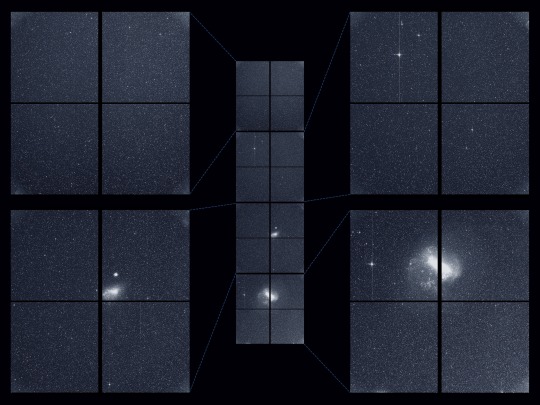
This spectacular image, the first released using all four of TESS’ cameras, shows the satellite’s full field of view. It captures parts of a dozen constellations, from Capricornus (the Sea Goat) to Pictor (the Painter’s Easel) — though it might be hard to find familiar constellations among all these stars! The image even includes the Large and Small Magellanic Clouds, our galaxy’s two largest companion galaxies.
The science community calls this image “first light,” but don’t let that fool you — TESS has been seeing light since it launched in April. A first light image like this is released to show off the first science-quality image taken after a mission starts collecting science data, highlighting a spacecraft’s capabilities.

TESS has been busy since it launched from NASA’s Kennedy Space Center in Cape Canaveral, Florida. First TESS needed to get into position, which required a push from the Moon. After nearly a month in space, the satellite passed about 5,000 miles from the Moon, whose gravity gave it the boost it needed to get into a special orbit that will keep it stable and maximize its view of the sky.

During those first few weeks, we also got a sneak peek of the sky through one of TESS’s four cameras. This test image captured over 200,000 stars in just two seconds! The spacecraft was pointed toward the constellation Centaurus when it snapped this picture. The bright star Beta Centauri is visible at the lower left edge, and the edge of the Coalsack Nebula is in the right upper corner.

After settling into orbit, scientists ran a number of checks on TESS, including testing its ability to collect a set of stable images over a prolonged period of time. TESS not only proved its ability to perform this task, it also got a surprise! A comet named C/2018 N1 passed through TESS’s cameras for about 17 hours in July.
The images show a treasure trove of cosmic curiosities. There are some stars whose brightness changes over time and asteroids visible as small moving white dots. You can even see an arc of stray light from Mars, which is located outside the image, moving across the screen.
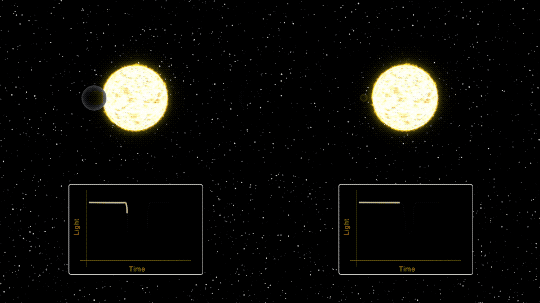
Now that TESS has settled into orbit and has been thoroughly tested, it’s digging into its main mission of finding planets around other stars. How will it spot something as tiny and faint as a planet trillions of miles away? The trick is to look at the star!
So far, most of the exoplanets we’ve found were detected by looking for tiny dips in the brightness of their host stars. These dips are caused by the planet passing between us and its star – an event called a transit. Over its first two years, TESS will stare at 200,000 of the nearest and brightest stars in the sky to look for transits to identify stars with planets.
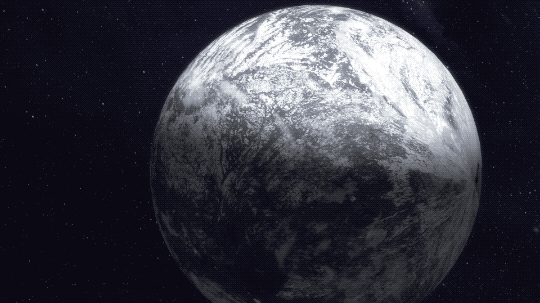
TESS will be building on the legacy of NASA’s Kepler spacecraft, which also used transits to find exoplanets. TESS’s target stars are about 10 times closer than Kepler’s, so they’ll tend to be brighter. Because they're closer and brighter, TESS’s target stars will be ideal candidates for follow-up studies with current and future observatories.

TESS is challenging over 200,000 of our stellar neighbors to a staring contest! Who knows what new amazing planets we’ll find?
The TESS mission is led by MIT and came together with the help of many different partners. You can keep up with the latest from the TESS mission by following mission updates.
Make sure to follow us on Tumblr for your regular dose of space: http://nasa.tumblr.com.
#nasa#tess#space#universe#solarsystem#science#planets#exoplanets#planethunter#spacecraft#stars#searchforlife#satellite
4K notes
·
View notes
Photo

#Repost @astrooglore with @get_repost ・・・ Total solar eclipse of 2017 😱 . . Also shown, Mars on the right and Regulus (bright star) to the left of the eclipse . . 📸 amazing shot by Nicolas Lefaudeux . . constellations #starstuff #outerspace #galactic #spacepics #hubbletelescope #sun #astronomyphotography #deepsky #spacetime #totalsolareclipse #eclipse #solareclipse #spacetravel #astroglore #searchforlife #nightsky #space #science #astrophysics #stars #astronomy #universe #cosmos #spacetravel #explore #milkyway #astrobiology #stellar #discovery https://www.instagram.com/p/Btc0TuoBhvD/?utm_source=ig_tumblr_share&igshid=1wbqd174p0j2m
#repost#starstuff#outerspace#galactic#spacepics#hubbletelescope#sun#astronomyphotography#deepsky#spacetime#totalsolareclipse#eclipse#solareclipse#spacetravel#astroglore#searchforlife#nightsky#space#science#astrophysics#stars#astronomy#universe#cosmos#explore#milkyway#astrobiology#stellar#discovery
1 note
·
View note